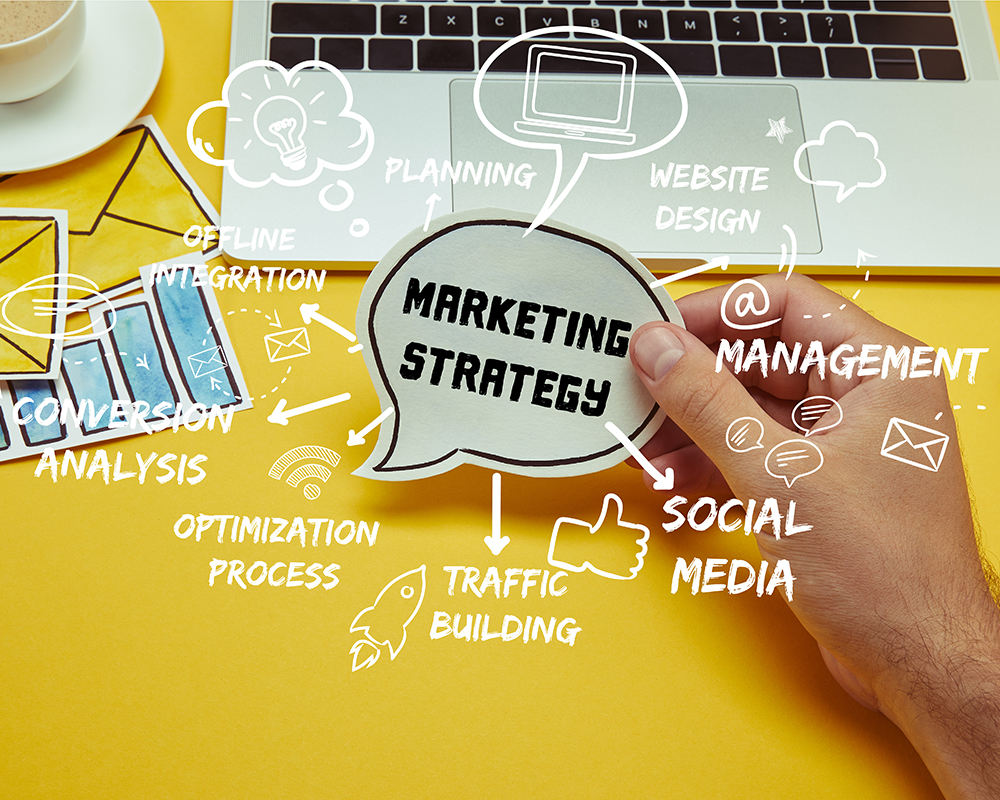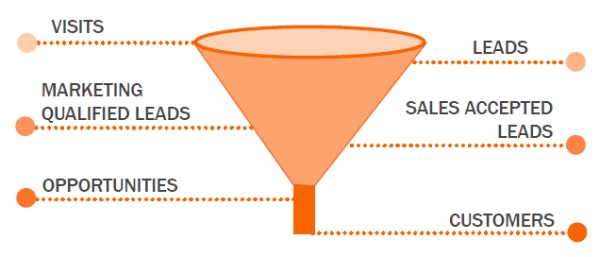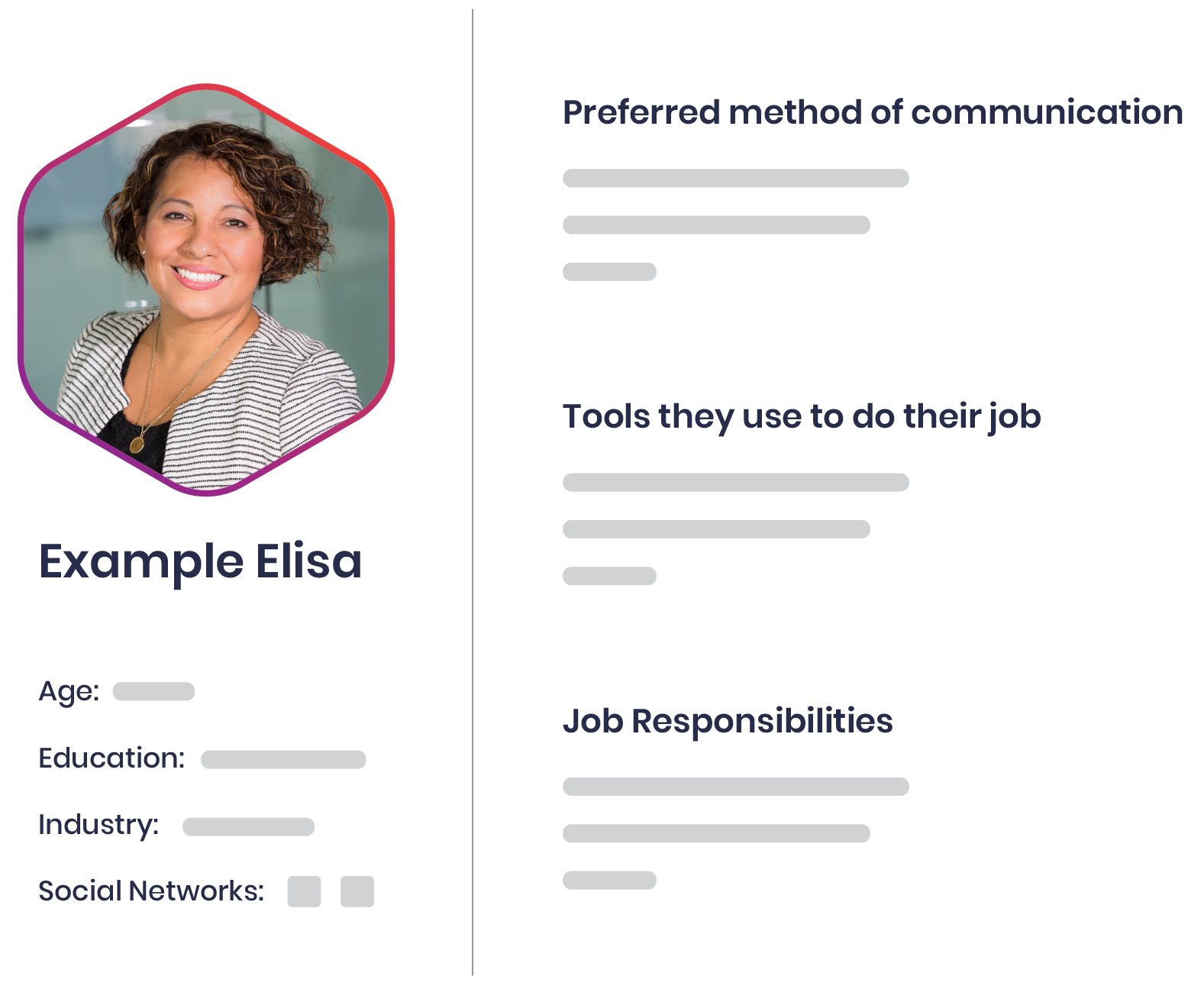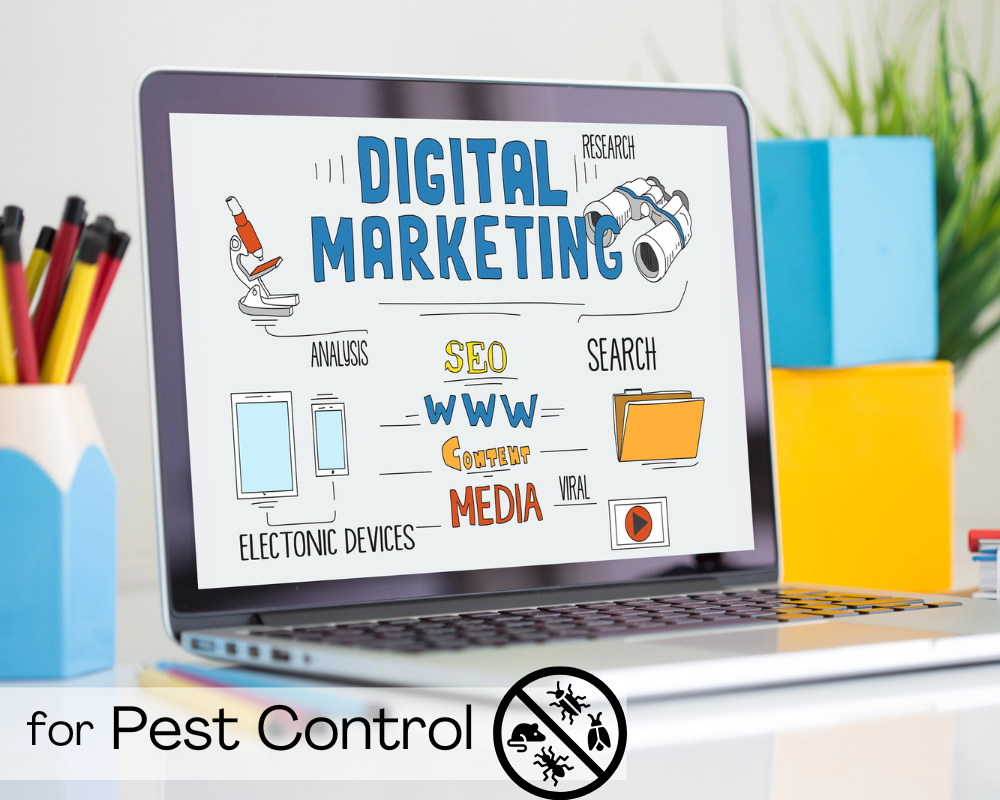How to Create a Digital Marketing Strategy

If you're wondering how to create a digital marketing strategy, this blog post is for you! We are going to go over the basics, as well as some great tips and techniques to make sure you do it with excellence.
When strategizing, you should put yourself in the role of a designer. Why? Because a designer is creative, which is important, but also technical. Creating a digital marketing strategy requires planning, and it takes time.
You also need to determine the scope of your strategy, whether you're planning for the entire company, or just a single campaign. There are two types of digital marketing strategies:
- Creating the overarching digital marketing strategy for your entire organization
- Creating the strategy for a digital marketing campaign
There are similar approaches to each type of strategy, but we felt it was important to point out that this article is focused on the first type: Designing a digital marketing strategy for your entire company.
Use this Digital Marketing Roadmap
If your strategy is to drive across country, it's a good idea to know where you are going, how long it will take to get there, and the best route to take along the way. That is why we recommend this roadmap to help you find your way to your destination.
Let's start with an overview of the roadmap:
- List your Top 3-5 Overall Priorities
- Assess your Brand Positioning
- Assess your Digital Marketing Readiness
- Visualize your target/ growth goal
- Sketch out your sales funnel
- Create a 12-month marketing plan
- Build & launch supporting marketing assets
- Setup your tracking systems
- Execute
Now, let's take a look at each step in more detail.
1. List your Top 3-5 Overall Priorities
Whenever you are creating a strategy, whether its a digital marketing strategy or any other kind of master plan, you should always first consider the broader scope of where you are headed. Starting this way can help bring clarity, vision, and purpose to the entire process. By listing your top 3 to 5 priorities, it will help you stay focused on what is truly important in the grand scheme of things.
Marketing is not the only part of a company that matters. Sometimes, other priorities exist which will directly impact your marketing strategy and therefore should be considered early on.
For most companies in growth mode, however, marketing is the priority, and that is a good place to be in once you sit down to design your digital strategy.
Pro Tip: Start with 2 full, uninterrupted hours to think about your priorities, goals, and opportunities. Where do you want to be in 12 months. Think backwards from there and mentally map out what it will take to get from A to B. Jot down your ideas on a notepad. (Don't use your phone - you don't want to risk a distraction!)
2. Assess your Brand Positioning
Where does your company currently exist in the minds of your target market constituents? Is your brand the first thing to come to mind when thinking about the product or services you provide? Your brand isn't what you say it is, it's what they say it is. What do they say about it?
Gather your market research data
Rather than just guessing, you need to rely on actual data and allow that data to drive your decisions. Otherwise, you don't get to call it a strategy - it's more of a "digital marketing aspiration". Hard numbers, trends, analytics, these are the ways of the growth strategist.
If you don't have any market research data, you may need to conduct some interviews with some of your best clients to find out why they chose you.
Craft a Positioning Statement
Where do you fit in your vertical? Write out a short paragraph that declares your brand's unique value and how you stand out from your competitors. As you are writing this, think about it as a love letter to your best customers. Be honest, be clear, and be direct. Tell your customers how you truly feel and why they should be with you, and not someone else.
Build a Target Account List
If you're a B2B, write a list where you name the companies that you want to become your customers.
Build & execute a prospecting outreach plan
Write a plan about what you're going to do to communicate your message to your prospects, and when you're going to do it.
Make sure your brand messaging is on point, that it tells the true story about how you solve your customer's problems, and that it's not about you, it's about them.
Assess your Digital Marketing Readiness
Part of your strategy is to make sure you are ready. When climbing Mount Everest, most of the fatalities that occur don't happen on the way to the summit, they happen on the way back down. A critical flaw in an otherwise great strategy is to miscalculate your actual destination. Some adventurers, tragically, made sure they were prepared to climb to the top of the mountain, but they should have been prepared to climb to the top, then climb back down and return home.
For this part of the strategy, make a "packing list". What will you need to bring along the way to your final destination? Do you have everything you need? If not, what else will you need to obtain and where are you going to get it from?
This meticulous and tedious part of the plan requires thinking through every contingency to truly make sure you are going to survive the journey.
Audit your Content
Assess which content you already have.
Assess which content you'll need to create.
Make plan to determine who will create the content, and when.
The content you need for your digital strategy will take various forms:
- Written Copy
- Video
- Infographics
- Photos
- Images / Graphics
- Charts and Data
You'll need to use this content for a variety of purposes.
- Websites
- Ad Campaigns
- Blogs
- Podcasts
- Email Drip Campaigns
- Social Media Channels
- Webinars
- Sales Team Tools
- Brand Collateral
- Lead Magnets: Ebooks, Guides, Whitepapers, Freebies, reports, and PDF downloads
- Videos for web, social, sales, or services uses
Use a spreadsheet to list all of the content you'll need. Later, in the section about building the marketing assets, you'll find that this spreadsheet will prove to be invaluable.
Make sure you have all the right tools
You may need to invest in tools to help you deliver your content, and measure your results. Do you have a sophisticated CRM? Do you have tools that will make your job easier and more efficient? Do you have tools that empower you to deliver content with excellence? Do you have tools that will help get ranked on top of search engines?
The following list includes several tools you should explore to make sure you have the right tools for your digital marketing needs:
- Google Analytics
- Hootsuite
- HubSpot
- Ahrefs
- SEMrush
- Active Campaign
- Google Workspace
- HotJar
- Adobe Creative Suite
- Vidyard
- Anchor.fm
Visualize your target/goal
The quality of your goal determines your likelihood of success. We recommend the SMART method of goal setting.
To make sure your goals are clear and realistically achievable, each one should be:
- Specific (simple, sensible, significant).
- Measurable (meaningful, motivating).
- Achievable (agreed, attainable).
- Relevant (reasonable, realistic and resourced, results-based).
- Time bound (time-based, time limited, time/cost limited, timely, time-sensitive).
Take some time right now and write out your goal. A good goal for your digital marketing strategy is something like this:
By the end of Q4, we will increase revenue by 20% by using an inbound marketing focus that generates 30% more leads and increases our conversion rate by 5%.
Now that you have your goal, close your eyes and visualize looking at the report that shows the data which proves you've met your goal. Remember, your goal needs to be measurable, and when it comes to marketing, all goals can be measured with numbers. So, there's no finish line to imagine yourself crossing - instead, your destination will be a number on a chart. See it - Dream it - then Do it.
Sketch out your sales funnel
The Sales Funnel is the ideal tool visualize your digital marketing system in a way that helps you understand exactly how it will work.

First, determine how traffic is going to get into your funnel. Make a list of traffic sources. This might look like this:
- Organic Search Engines
- Paid Ads
- Social Media
- Links on Other Websites
Next, determine how you're going to coax your visitors to progress further down the funnel. This won't happen automatically, your traffic will need have a force that pulls them along the way. So, as part of your strategy you'll need to think about how your buyers will move to the next step on the customer journey.
If you haven't already done so, now is the perfect time to create your buyer journey. We'll cover that next!
Create your buyer journeys
You'll need to identify and label each milestone on their path from stranger to buyer. A typically buyer journey looks like this:

But, your customers may take a very different approach. it's important that you create milestones that reflect your actual buyers and the journey they take, highlighting each of the stopping points along the way.
For more information about this, including step-by-step instructions, read our helpful guide here: Inbound Marketing Strategy: Mapping the Customer Journey
Create your buyer personas
Another must-have tool in your digital marketing strategy tool belt is the buyer persona. If you haven't already created one, you must do that now as well. If you have created one, make sure to update in light of new/adjusted goals for your organization.
A Buyer Persona is defines as:
A semi-fictional representation of your ideal buyer based on data, interviews, and some educated guesses.
Here's an example of a buyer persona:

If you would like step-by-step instructions on how to create a buyer persona, read our helpful blog post here: Create Detailed Buyer Personas for your Inbound Marketing Strategy
Create a 12-month marketing plan
"Wait a minute! You're creating a strategy and now we're telling you to create a plan? What's the difference? Ugh I'm so confused!" - You, just now.
Fear not! The difference between a strategy and a plan is simple. Your digital marketing strategy provides an overview of the reasons why your marketing team will need certain resources, take certain actions, and set certain goals over the year. Your digital marketing plan is the specific actions you'll take to achieve that strategy.
We recommend calling it a 12-month marketing calendar, or simply a 12-month marketing plan. This will outline the steps you will take over the next year.
Build & launch supporting marketing assets
The core of every great digital marketing strategy is great content. Content, content, content! And yes, it must be truly great content. You need to start writing! Everyone needs to start writing, and get your video camera ready as well!
Marketing Assets include:
- Written Copy
- Video
- Infographics
- Photos
- Images / Graphics
- Charts and Data
You'll need to use these assets for a variety of purposes.
- Websites
- Blogs
- Podcasts
- Email Drip Campaigns
- Social Media Channels
- Webinars
- Sales Team Tools
- Brand Collateral
- Lead Magnets: Ebooks, Guides, Whitepapers, Freebies, reports, and PDF downloads
- Videos for web, social, sales, or services uses
The key to being highly efficient is to try to repurpose as much of your content as possible.
For example, you can write a blog post, then copy the opening paragraph and paste it into an email, then clip out an excerpt and post it on social media. There's no need to reinvent the wheel each time you create a marketing asset. Work smarter, not harder!
Setup your tracking systems
Once your plan is done, and your strategy is complete, there is one final step you need to do before you execute. Make sure everything is being measured. Set up your analytics so you can measure responses to ads. Build your A/B split testing tools so you can run experiments. Setup goals so you can monitor the ROI from specific campaigns.
PRO TIP: The smartest marketers set up every system so they can track one thing: Revenue Attribution.
For more information about setting up your tracking systems, read our how-to guide here: How Do I Measure Digital Marketing ROI?
Execute
Now it's time to pull the trigger. You're ready. You've aimed. Now fire away!
In Conclusion
The roadmap we've provided for you will help you get from your starting point all the way to your final destination of creating, planning, and designing a digital marketing strategy. So go out there and do great things! Work hard, but remember to have fun along the way. We hope you have enjoyed learning about this vital topic. We wish you every imaginable success you can possibly achieve!
If you find this task to be too much for you, and would like an expert to help you do it, well, we do this very thing for companies all day long.
 !
!






